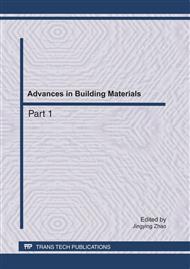p.1094
p.1099
p.1104
p.1109
p.1114
p.1119
p.1124
p.1129
p.1134
The Mechanics Analysis and Feedback Design for Shallow Multi-arch Tunnel under Unsymmetrical Pressure
Abstract:
Shallow multi-arch tunnel under unsymmetrical pressure has complex mechanical behavior to which further study is lacking at present. The existing design methods are thoughtless about the features of shallow and partial pressure. The phenomena of cracks, collapse or other diseases in tunnel lining structure are often seen during the construction or after the completion. Combining one tunnel example, this paper presented scientific feedback design method that suited for Shallow multi-arch tunnel under unsymmetrical pressure: made load back analysis with collected information during construction, then averaged the above load and field monitoring load to make forward analysis and internal force calculation, which was used as reference of reinforcement and sectional design for lining structure.
Info:
Periodical:
Pages:
1114-1118
Citation:
Online since:
May 2011
Authors:
Price:
Сopyright:
© 2011 Trans Tech Publications Ltd. All Rights Reserved
Share:
Citation:


